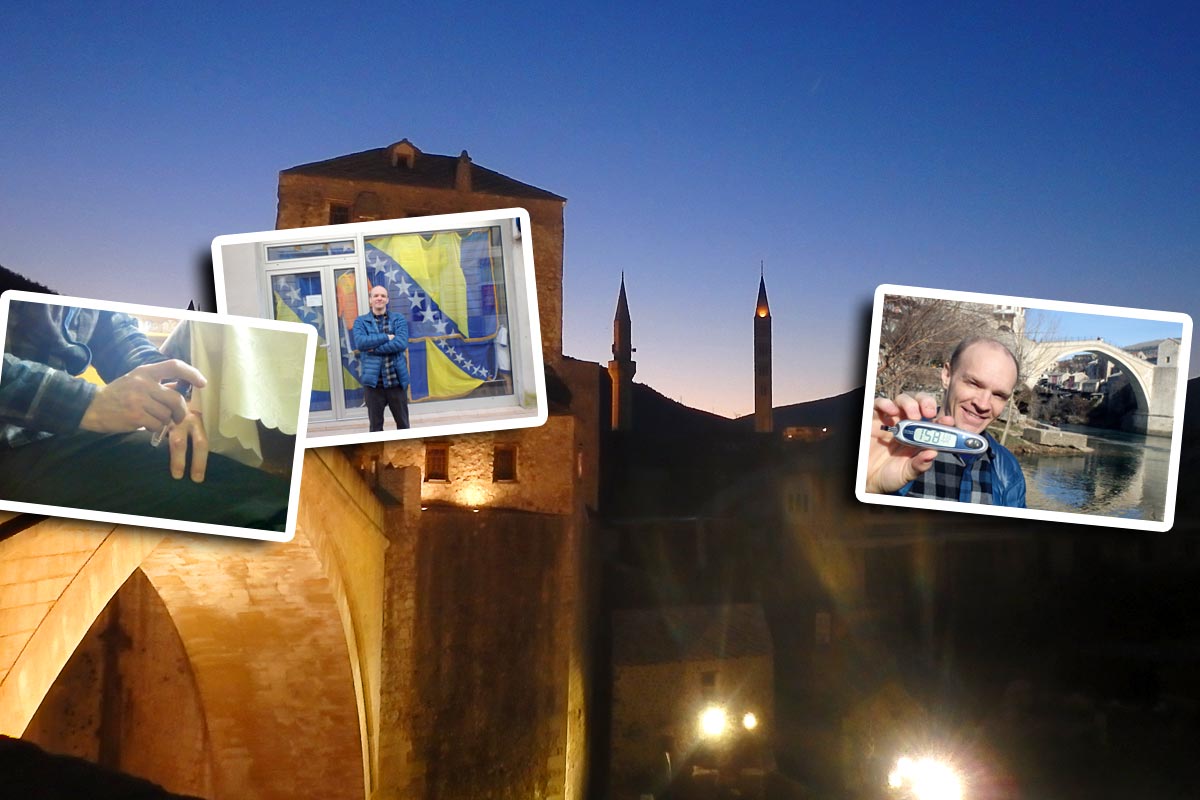
Diabetics can and should travel to the country of Bosnia and Herzegovina just like anyone else. There is no danger and no reason to shy away from visiting this somewhat hidden land of beauty and warm, inviting people. All it takes is a little preparation, both practical and mental.
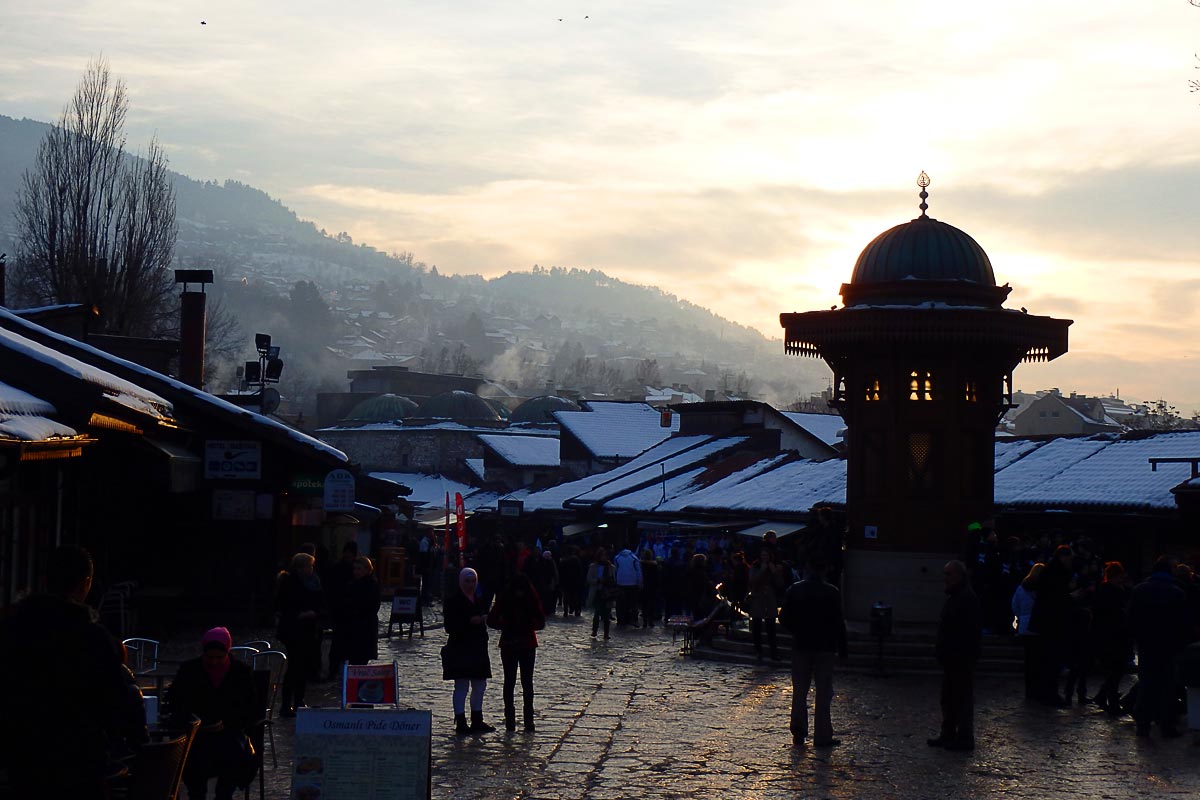
Sarajevo.
In this guide to traveling to Bosnia and Herzegovina with diabetes, you’ll find:
- Information about food vs. insulin in BiH
- Practical tips for traveling around BiH as a diabetic
- How to carry diabetes supplies in BiH
- Experiences from a Type 1 diabetic who visited BiH
- Inspiration in case you haven’t yet decided to go to BiH
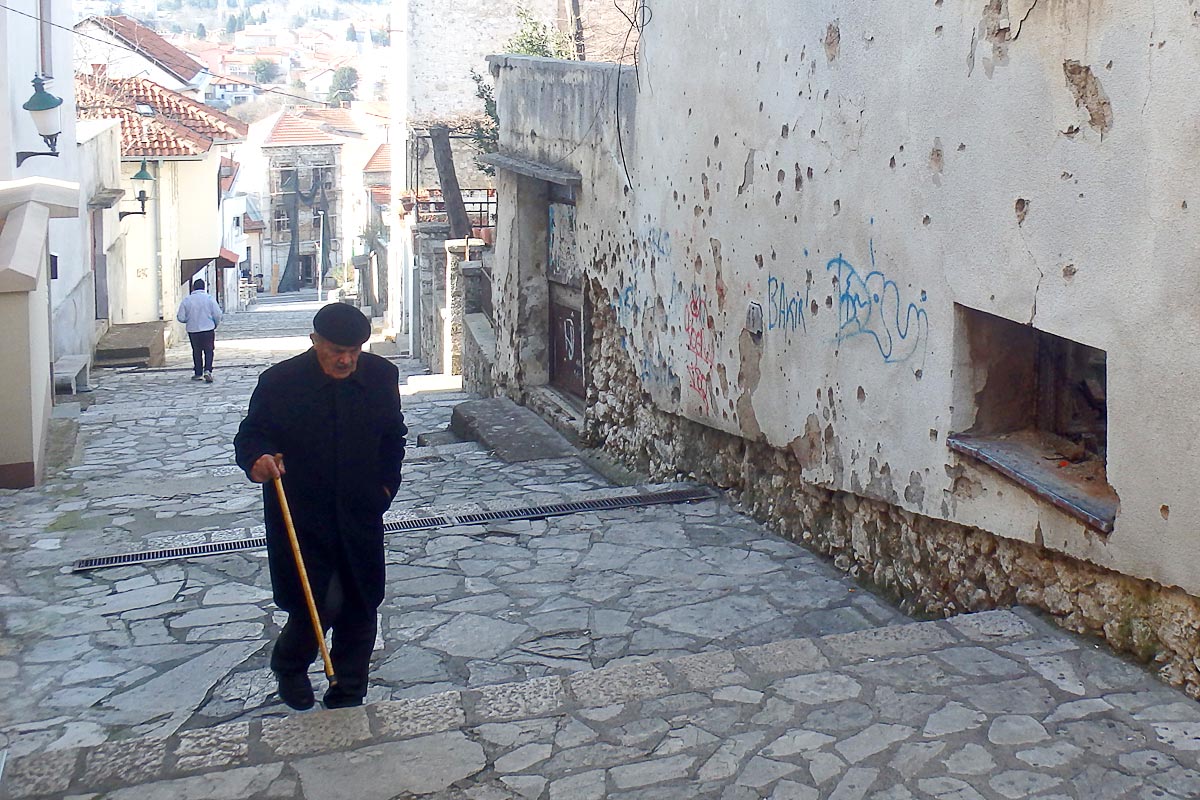
Alley in Mostar, bullet holes still in the walls.
A quick overview of Bosnia and Herzegovina
Bosnia and Herzegovina, or “Bosnia” or “BiH” (as it’s often abbreviated) is a triangle-shaped country with a complicated ethnic and political makeup. Roughly half of the land is a section also called Bosnia and Herzegovina, while the northern and western chunks are called the Srpska Republic. Tiny Brčko District in the northeast is considered a part of both.
Got all that?
At any rate, for diabetic travelers to Bosnia and Herzegovina, decent medical and food facilities can be found all over BiH.
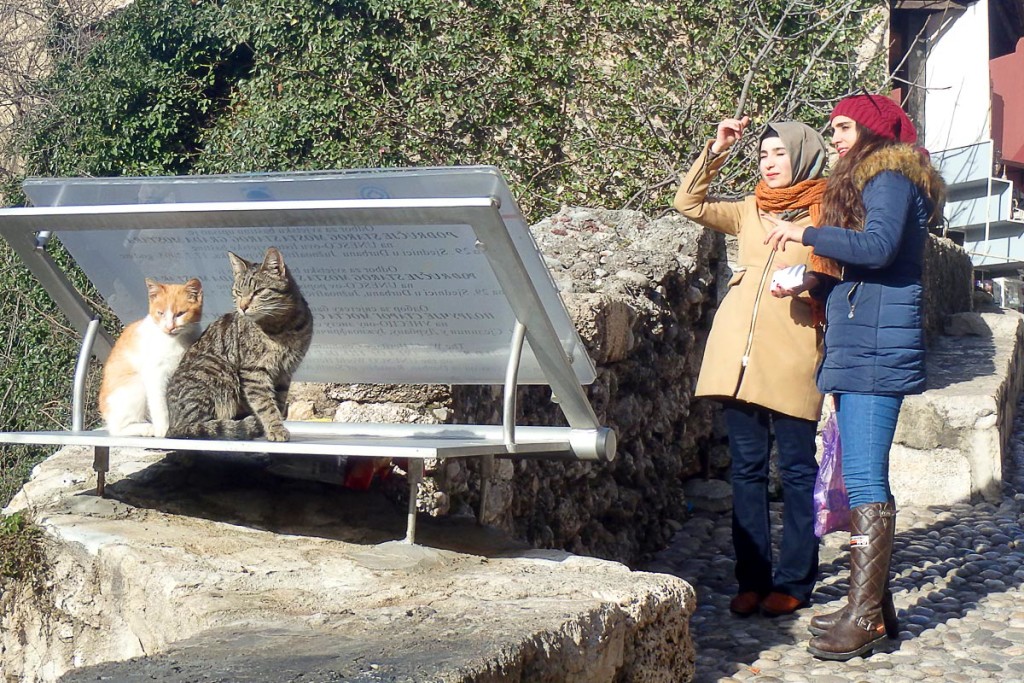
How to ensure your trip to Bosnia is smooth
Traveling with diabetes to BiH means being prepared, physically and mentally. These two areas are really all you need to prevent worry or bad accidents from spoiling your trip.
Physical preparation
Figure out how much insulin and testing supplies and needles and everything you will need for your time in Bosnia, then double it. Put half in one bag (a big suitcase, say) and the other half in your day pack that you can carry around with you. If the weather is hot when you go, get something to cool your insulin down if you need to, like a Frio pack.
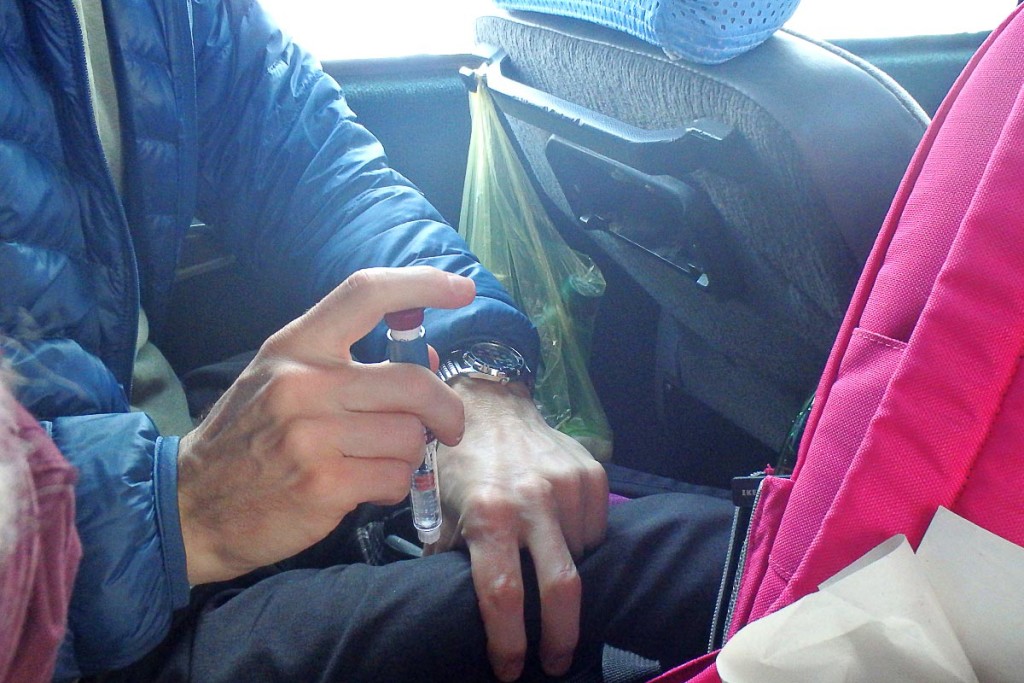
I believe that refrigerating insulin is important to a degree but is often overhyped. Even in a day pack in the sunshine, if it’s wrapped up in something and down in your bag away from direct sunlight it will probably stay cool enough.
But you can also refrigerate it as much as possible: guesthouses, hostels, and other accommodation in Bosnia will often have coolers, either in your room or available elsewhere, and you can always ask the owners if they have space for your medicine to be refrigerated.
Don’t forget it when you check out, though!
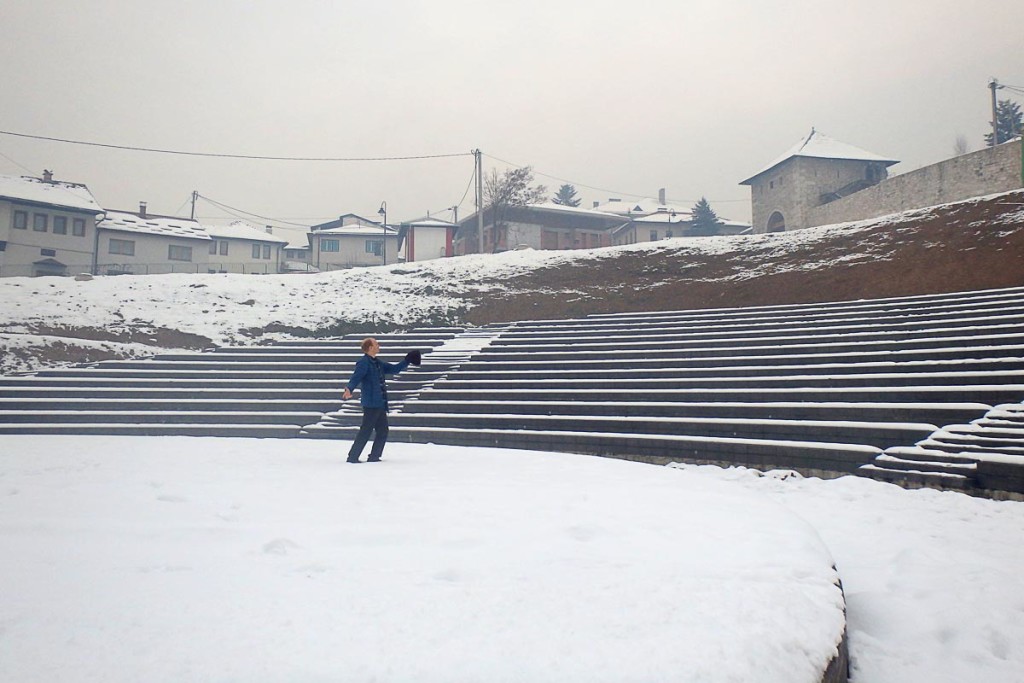
Something else you should seriously consider is a necklace, bracelet, anklet, or something that indicated you’re diabetic. Wearing it can help communicate about your condition (see How To Speak Bosnian below) but even so, note that it is unlikely you would actually need it (see Get the Right Attitude below).
Finally, always carry low blood sugar snacks with you. This means finding juice, cookies, or whatever else you want at a grocery store, kiosk, or vending machine. Always have enough, and don’t assume you’ll be able to find some wherever you’re going: stock up when you can, dividing the supply up into multiple bags if you need to.
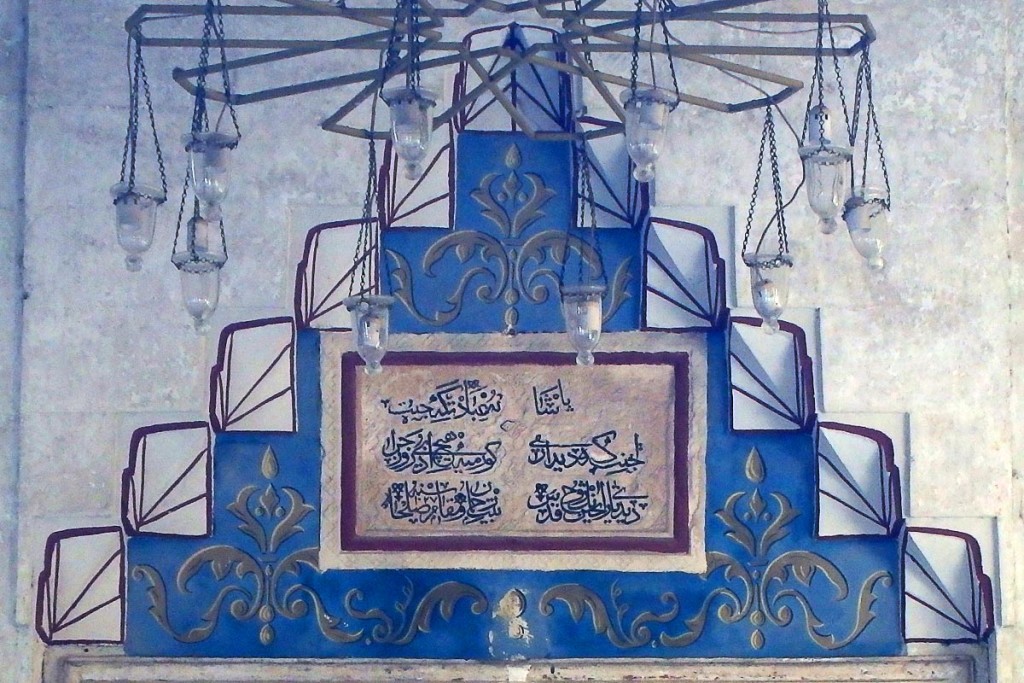
Get the right attitude
Mentally preparing yourself is the most important factor in having a smooth trip to Bosnia with diabetes. And it’s the simplest one All you have to do is remember this:
Nothing bad will happen to your diabetes in Bosnia.
Fear of what might happen can keep you on your toes, but too often discourages diabetics from doing things. As long as you pay attention to your diabetes – check blood sugar often and have enough supplies with you – an emergency situation is so unlikely that you can basically forget it.
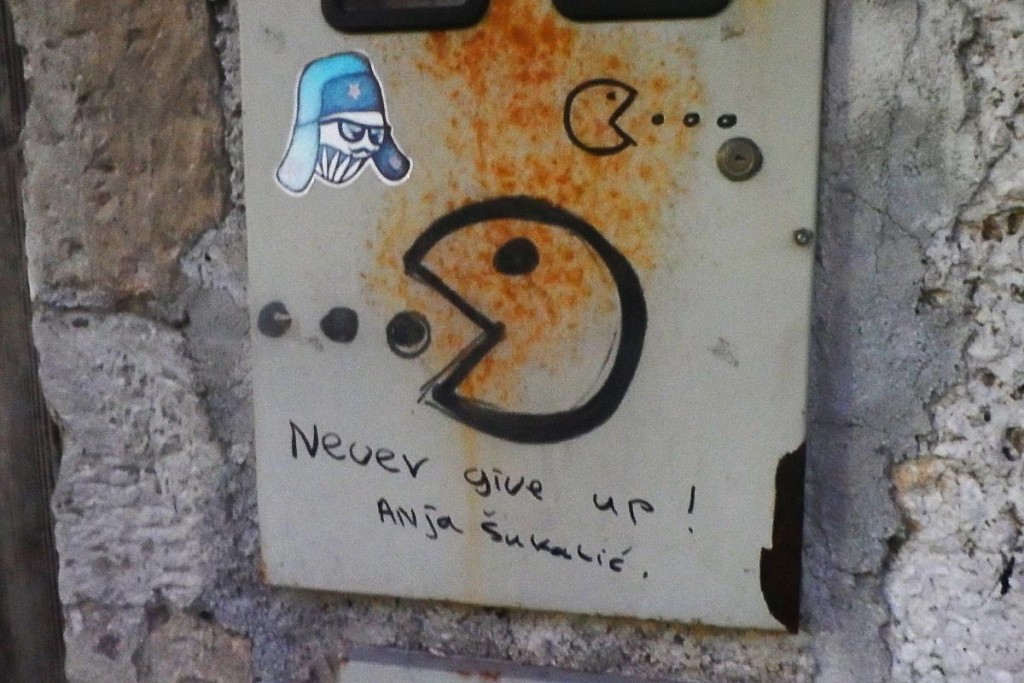
Inspirational Pac-Man graffiti in English, Mostar.
Whatever happens, you’ll be able to handle it. Free yourself from the tyranny of worry – it’s an indulgence that makes you feel smart and responsible but is actually just a way of limiting yourself.
Go travel to Bosnia – your diabetes will be fine!
How to speak Bosnian – for T1Ds
If you want to say “diabetes mellitus” to someone in Bosnia, first understand that two alphabets are used in Bosnia for basically the same language: Roman and Cyrillic. (Learning the Cyrillic alphabet before you go is pretty easy, and recommended since it will help you sound things out if need be.)
In the Roman alphabet, “diabetes mellitus” is šećerna bolest, in Cyrillic шећерна болест. Both are pronounced “sheh chair na ball est”.
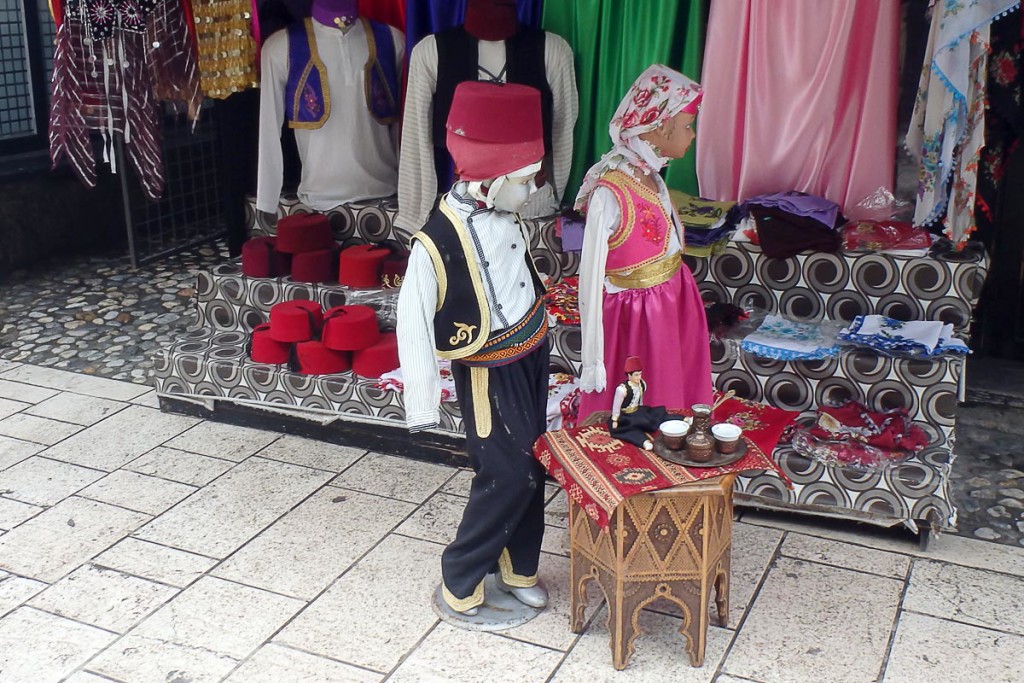
However! The English phrase “diabetes” or even “diabetes mellitus” will be just as understood by anyone who matters medically (pharmacists, EMTs, et cetera). Saying that, and especially pronouncing it “dee a beh tess”, showing your insulin pen or pump, and/or wielding a necklace or card that says “DIABETES MELLITUS” will certainly get the job done if you need it.
(But remember, this is very unlikely.)
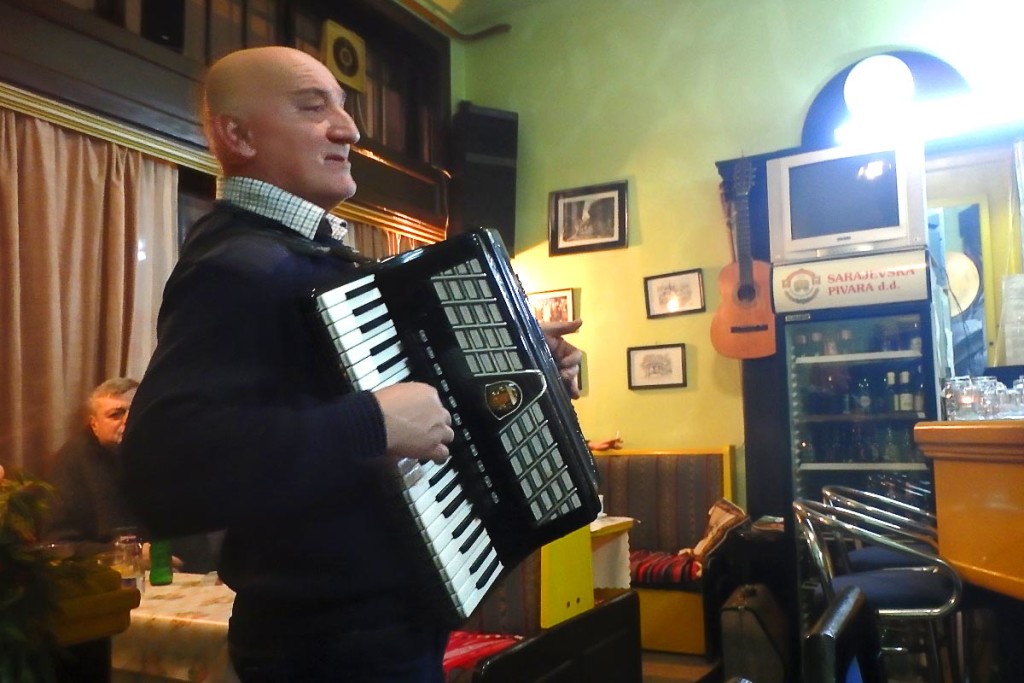
So if you want to communicate with a Bosniak or Serb about your beticness, just go for the English unless you really enjoy the challenge of trying the local language. If you can write it out in Cyrillic they’ll be especially impressed!
Note that the language, and even the name of the language, is controversial in Bosnia and in Srpska. It’s advised you don’t wade into the waters of that topic if you don’t have to.
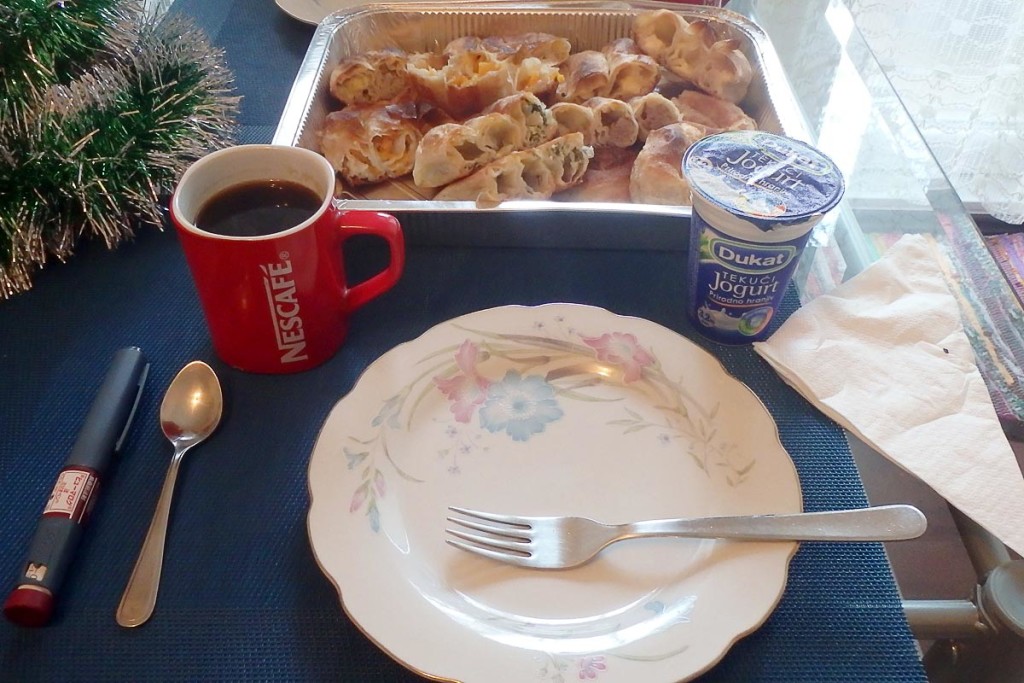
Burek and yogurt for breakfast.
Food in BiH
What you eat in Bosnia will be an important deciding factor in how your diabetes (i.e., blood sugar levels) is there. If you’re like most travelers you’ll be trying a mixture of local food, junk food, and other types of things.
Practically, assume that things are higher in carbs than you might think. Spiritually, don’t shy away from certain foods just to please your diabetes. Eat what you want – make your best guess for your insulin dose, and check, check, check often!
Your meals and snacks in Bosnia and Herzegovina will probably resemble mine to some degree. Here’s a sampling:
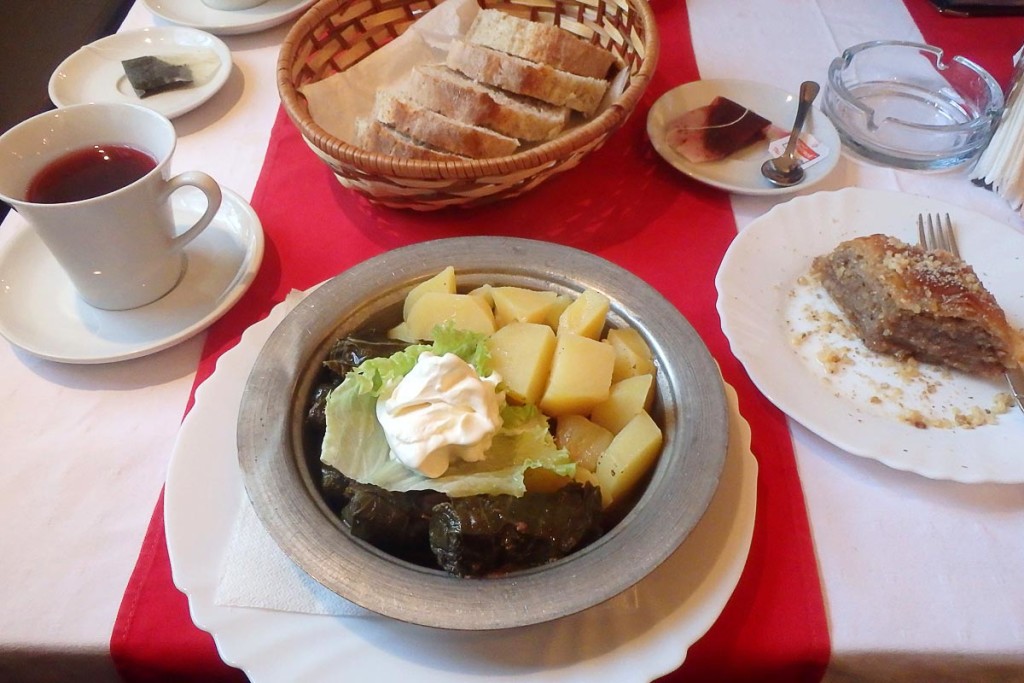
Japrak, bread, and baklava.
- Bosnian food – Being Muslim, the culture (including food) of the Bosniaks has ties to Turkey and Ottoman culture. Pastries like burek, filled with meat or cheese and topped with runny yogurt, are cheap and excellent and are relatively easy to calculate insulin for. Things like japrak (cabbage and meat with potatoes) and baklava (heavy sweet cake) are astonishingly delicious. Just watch the carbs!
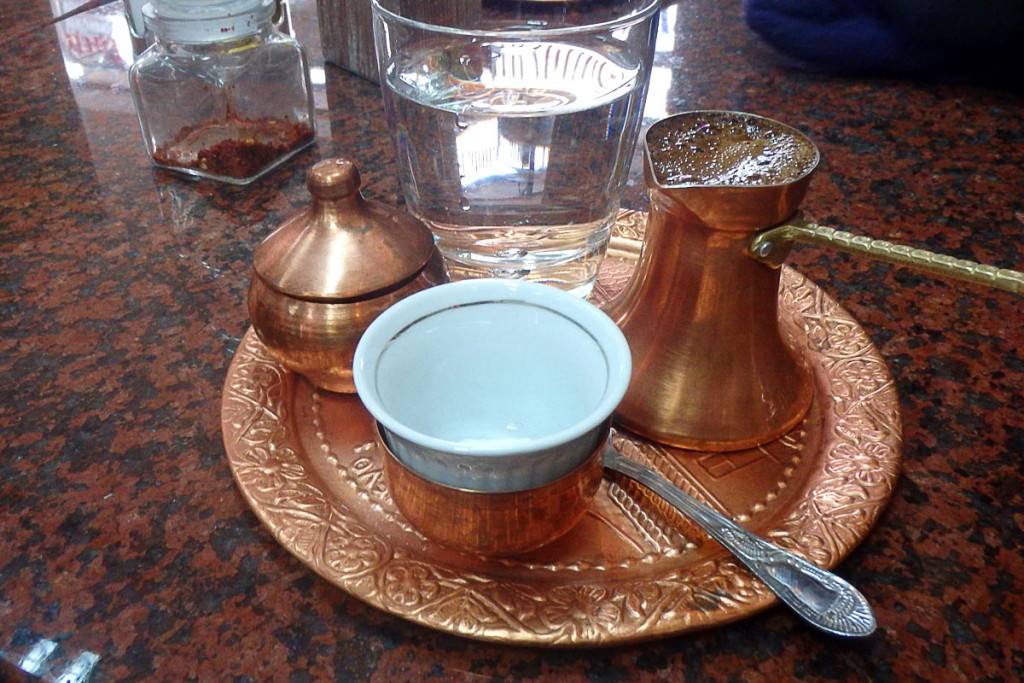
- Bosnian tea – Comes in ornate little brass pitchers and giant sugar cubes. You pour the tea over a cube or two, which dissolve into your cup. Of course, you don’t have to take sugar with yours (I like it straight anyway) but you could give yourself a unit or two of insulin and try the sugar just once, for the experience.
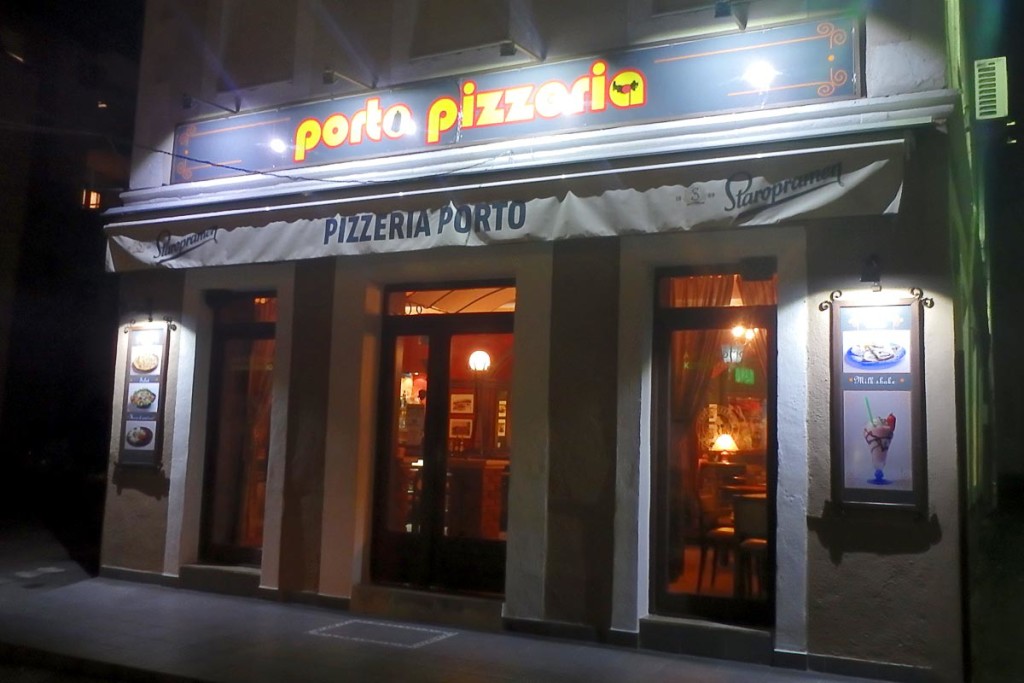
- Pizza and hamburgers – Local places that sell the familiar old standbys are usually not too hard to locate, and are good choices for when you don’t want to embark on a strange new culinary experience or cook for yourself. As usual, pizza crust and fries can be pretty thick in carbs.
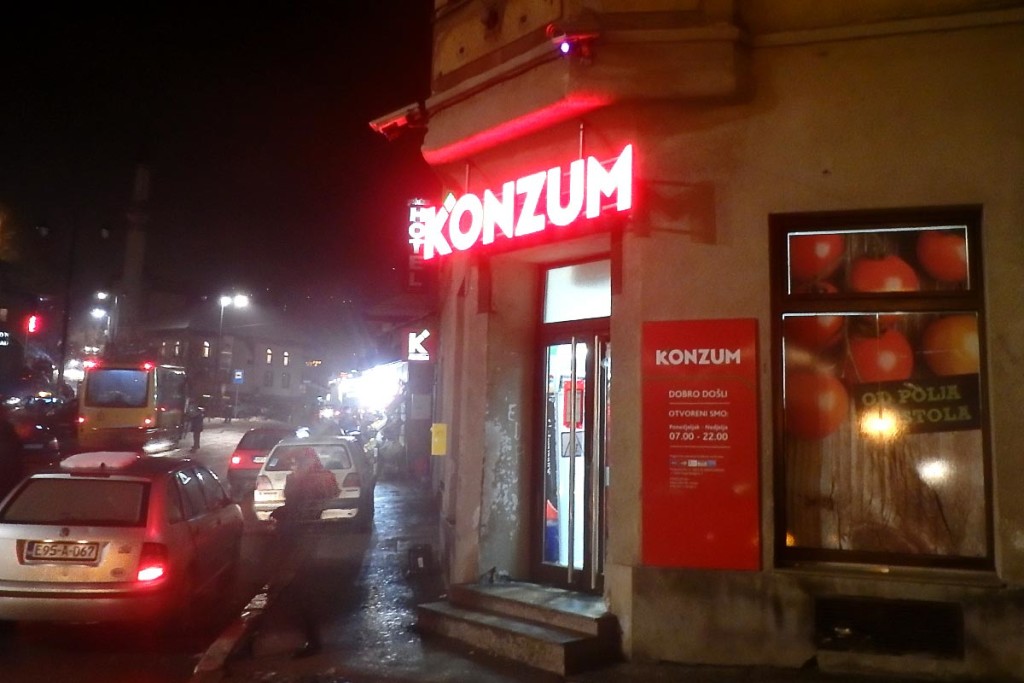
Konzum, a popular grocery store chain in Bosnia.
- Supermarkets and kitchens – If you opt for a guesthouse or hostel with its own kitchen (see below) you can find a good range of quality foods in the local supermarket and cook your own tasty, balanced meal. This has the advantages of letting you know the carb amount of most of the things you’re eating. Might even save a little money too.
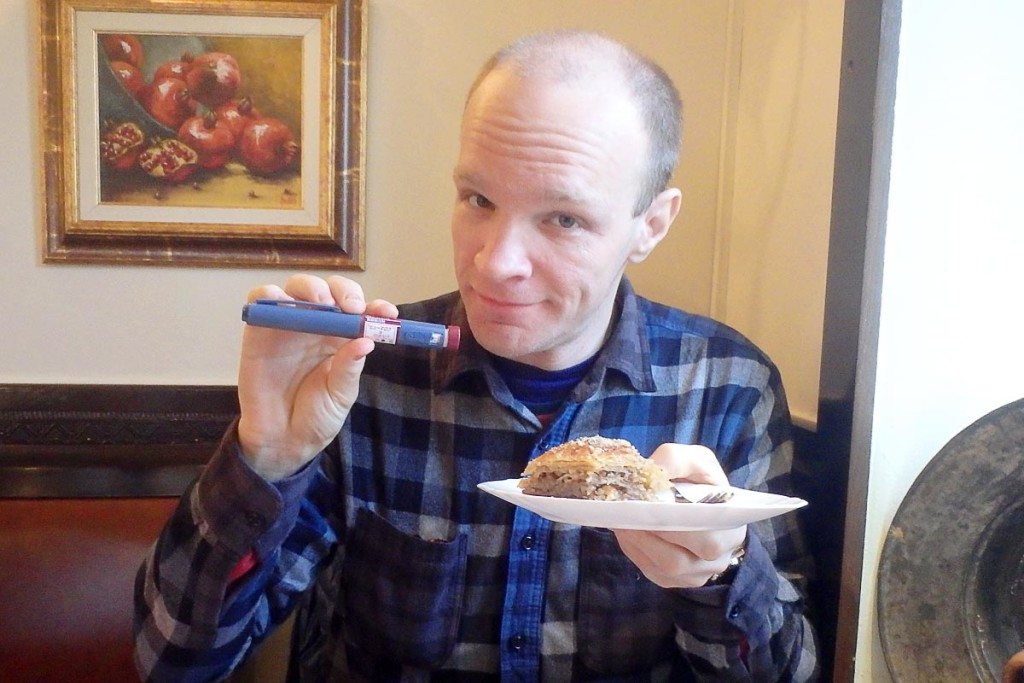
Bosnian food is great, and there are many varieties of things to try when traveling there. Just make your best guess, try a dose of insulin (or two), and then check and adjust. Keep at it, even through what may seem like endless bad readings, and you’ll eventually start to triumph more and more.
Injecting and pricking in public
Depending on your routine, you may be able to inject insulin or check your blood glucose right in public in Bosnia and Herzegovina. Personally, I always injected in my legs, through my pants, right at the restaurant table or the train/bus seat.
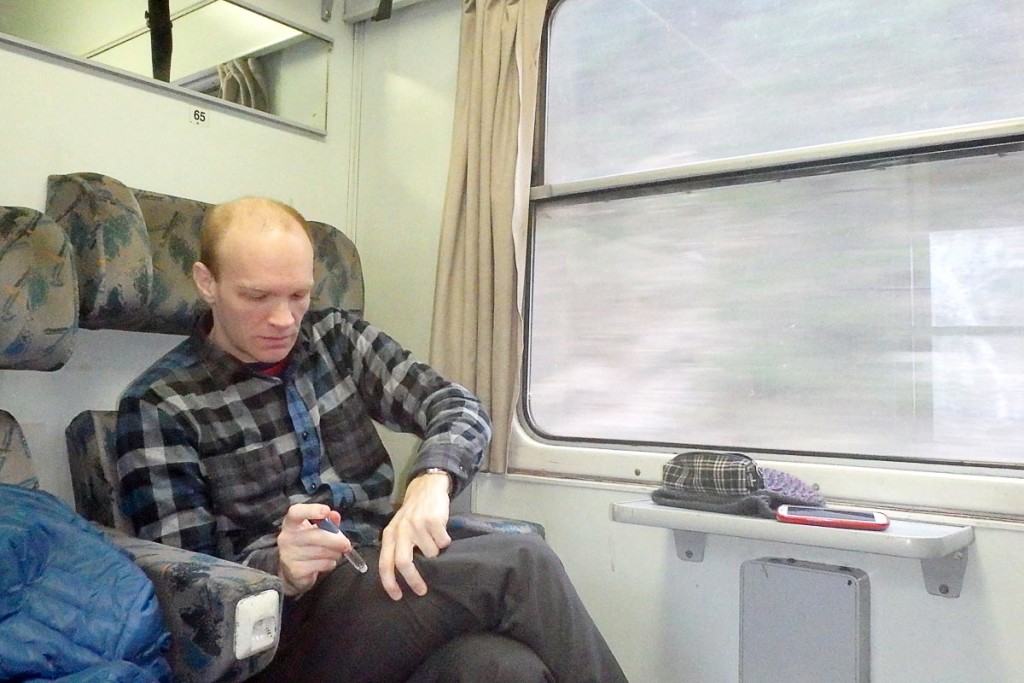
Humalog on the train to Sarajevo.
But be discreet. If you are in plain view of people you might want to go to the bathroom and do it. Same goes for checking BG. You’re used to it but some people aren’t, so if you can’t properly shield yourself from others, be considerate.
(Read my Full Review of Bluff Works Travel Pants.)
Accommodations in Bosnia and Herzegovina
Depending on your budget, you have a wide range of choices in Bosnia of where to stay. Guesthouses and private apartments can be great value, especially if you’re traveling with someone. Dorm beds and lower-priced hostels of course are around, especially in bigger towns.
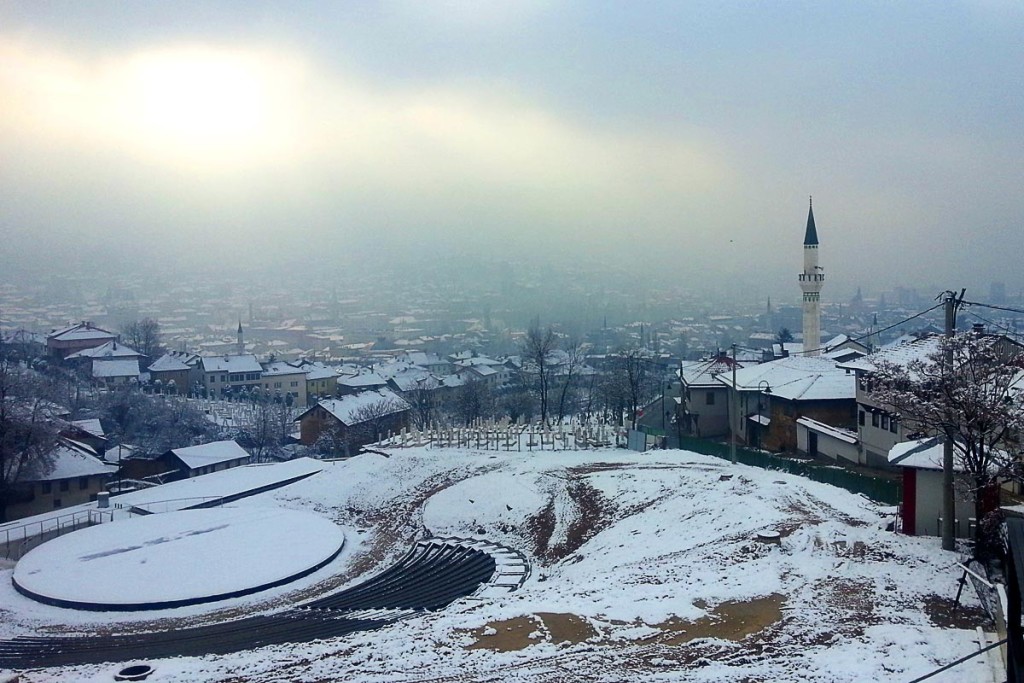
Somewhere in there is a capital city.
I used booking.com for all my rooms in Bosnia. And in every single one, I got to know the owners on a more friendly and personable level than just “staff vs. customer”. All gave us free food and great hospitality. People tend to be nice everywhere, but especially so in Bosnia and Herzegovina.
Some of the places I stayed can give you an idea of what to expect in Bosnia:
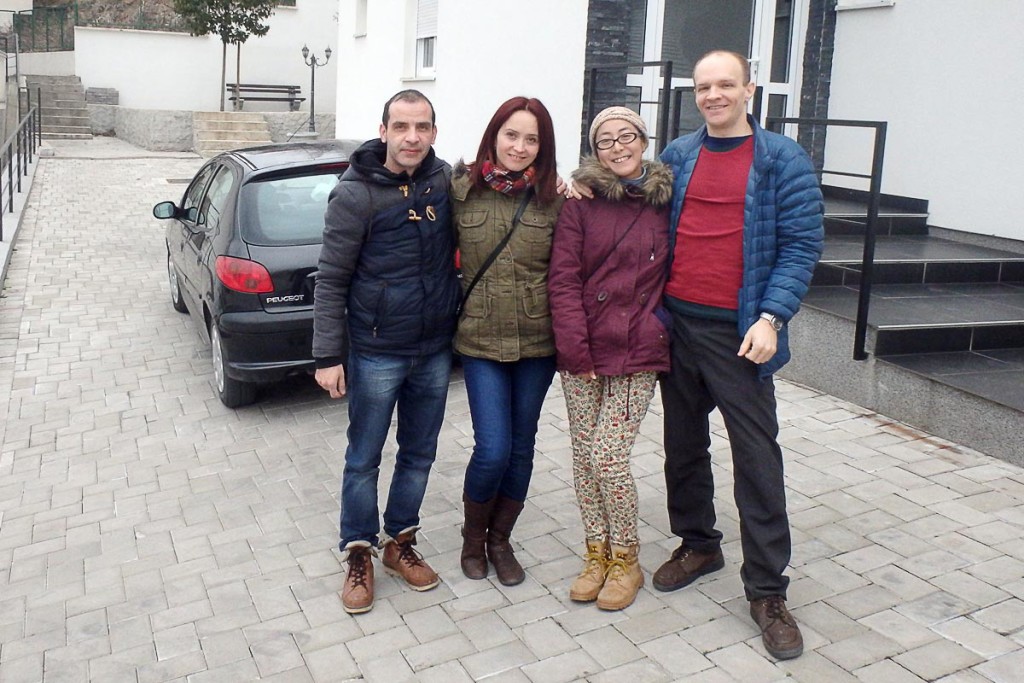
Us with the owners of Little Rock Apartments in Mostar.
- Little Rock Apartments, Mostar – Superb apartment-style place with a big living room and full kitchen. Run by a friendly young couple who offered us a low-priced tour by car of some nearby towns and mosques. They brought us burek one morning for breakfast and did everything to be helpful. Great location not too far from the famous bridge in town.
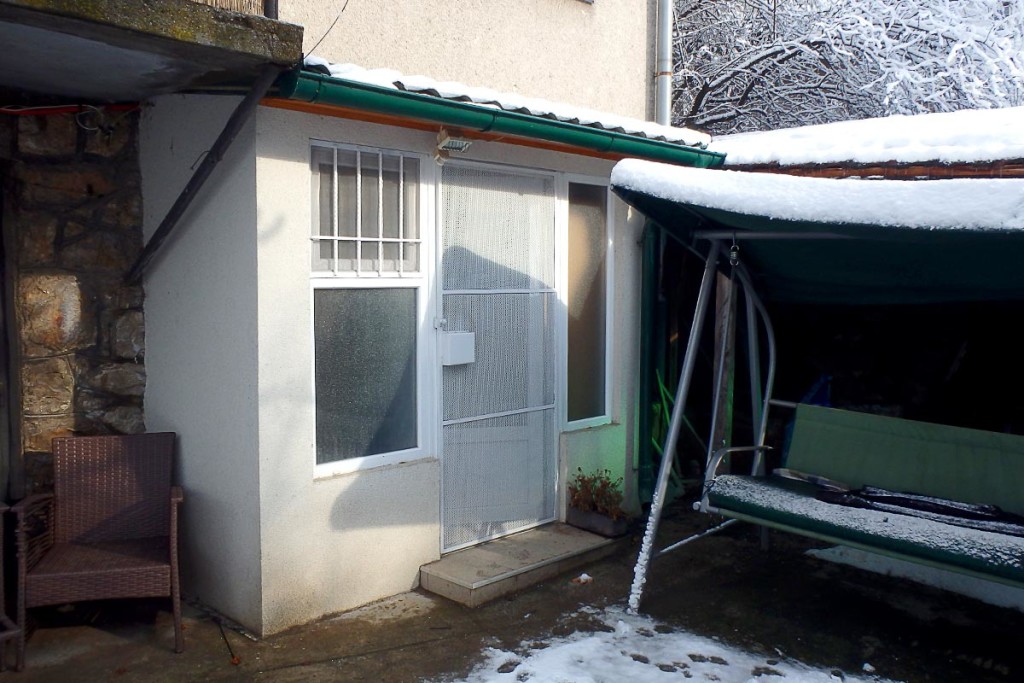
Guest House Kofrc in Sarajevo.
- Guest House Kofrc, Sarajevo – Up a hill past a large cemetery, this is a small room in a little building next to the owner’s house. Cramped but with enough room to sleep four. The owner told us how to get around and her daughter brought us some homemade cake one night, and we visited their house for a nice chat on our check-out day. Quiet place just a hike up from the center of Sarajevo.
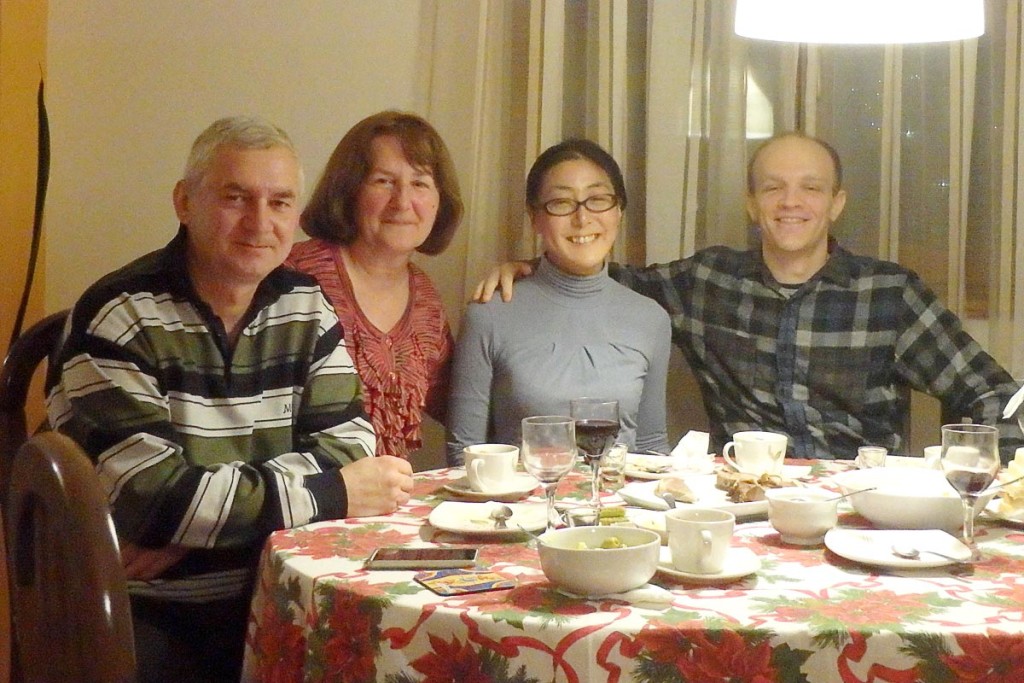
New Year’s dinner with the owners of Apartman Dimitrieski.
- Apartman Dimitrieski, Višegrad – Huge place with three double rooms, full kitchen and dining room, and living room. We had the entire place all to ourselves. Excellent place, with welcome beer and pastries laid out for us when we arrived. On Orthodox New Year’s Eve, the owners invited us upstairs to their place for a full home-cooked meal, easily the best meal of our entire European odyssey.
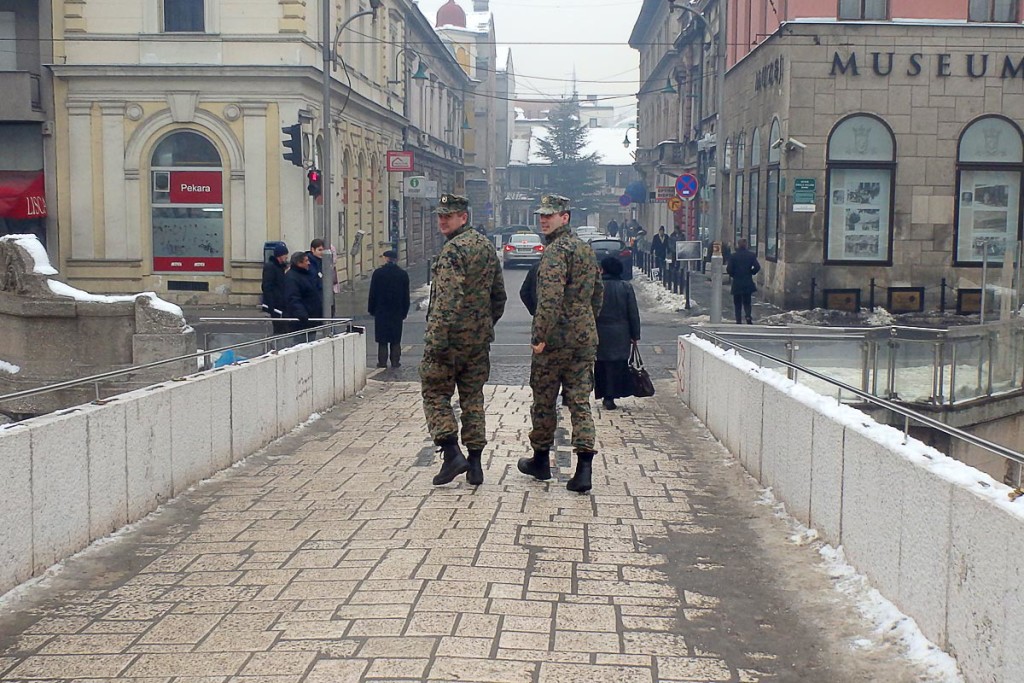
When staying in accommodation in Bosnia, you should relax and be open to the offers of your hosts. Take them up on their tours and invitations. They are running an excellent service and truly go out of their way to help. Note that having a phone can help since you often need to liaise with the owners if you haven’t arranged something carefully beforehand.
(On a diabetic note, be sure you have low blood sugar snack in the room with you since it may be hard to go out and find a store nearby, especially at night. Also, most places will have a refrigerator you can stick your insulin in. Just don’t forget it when you check out.)
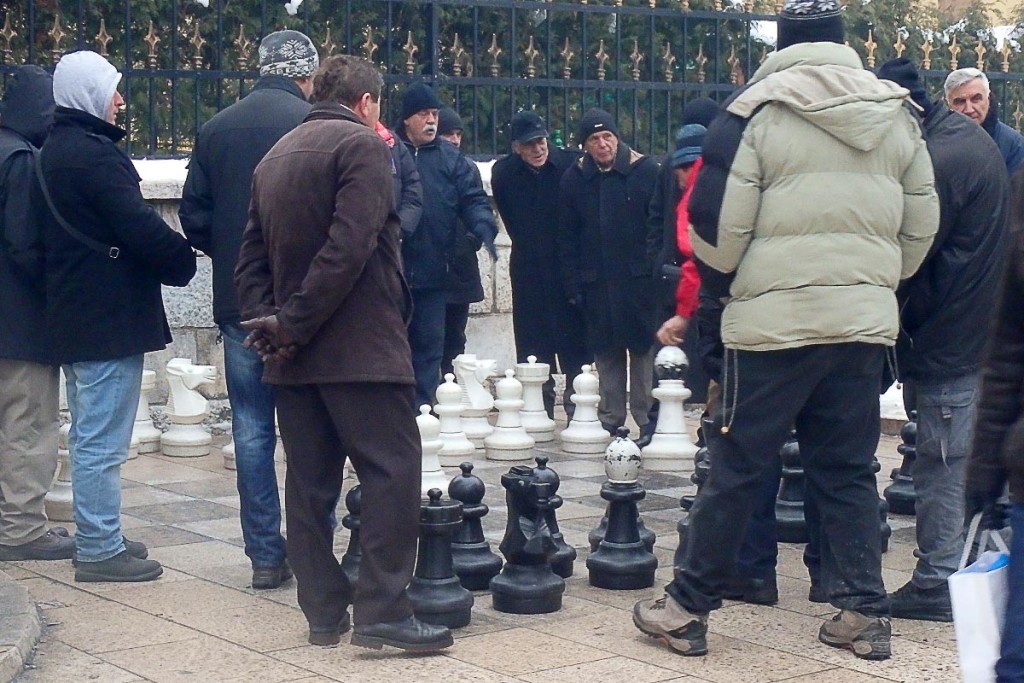
My diabetes experiences in Bosnia and Herzegovina
I kept track of all my BG checks in Bosnia, and unfortunately they were not that great. I was too high after dinner too often, and even in the mornings and afternoons I was having trouble. I believe the problem was stress, brought on by not eating enough sometimes and then worrying about it.
If you listen to your diabetes, it will help you straighten out your health in general. Here are the numbers for you to beat in Bosnia:
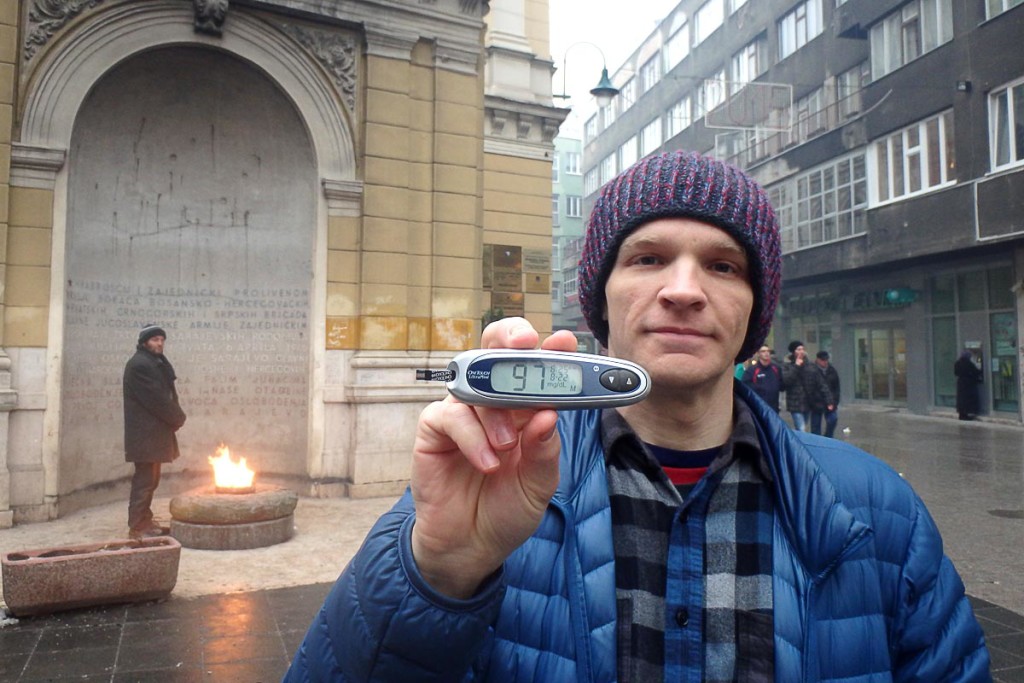
Good BG at Sarajevo’s Eternal Flame.
- Total number of BG checks: 45
- Average BG: 186
- Lowest BG: 38
- Highest BG: 343
- Average morning BGs (~12:00): 182
- Average afternoon BGs (12:00~6:00): 149
- Average evening BGs (6:00~): 256
Even if yours are this bad (or worse), don’t let it spoil your trip. Just keep trying to improve and trying to learn from each reading. You’ll eventually get better.
My route in Bosnia
There is much to see in Bosnia and Herzegovina. If you’re like me, you’ll become so enamored of each place you visit that you’ll stay longer and end up seeing less of the country! That can be nicer than rushing around though, and it just adds to your list of places to come back and visit some day.
Masayo and I entered by bus from Split, Croatia and first stayed in Mostar, seeing its famous bridge and still-bullet scarred buildings. We took a tour of local towns Počitelj and Blagaj as well thanks to our guesthouse owners (see above).
From Mostar we got a train through the countryside to the illustrious capital Sarajevo, full of history but with a rugged, almost small-town feel.
We walked across the “border” into the Republic of Srpska, which runs through Sarajevo, and got a bus to the quiet mountain town of Višegrad, which contains a UNESCO World Heritage bridge and lovely vistas to the surrounding hills.
From Višegrad we entered Serbia by bus.
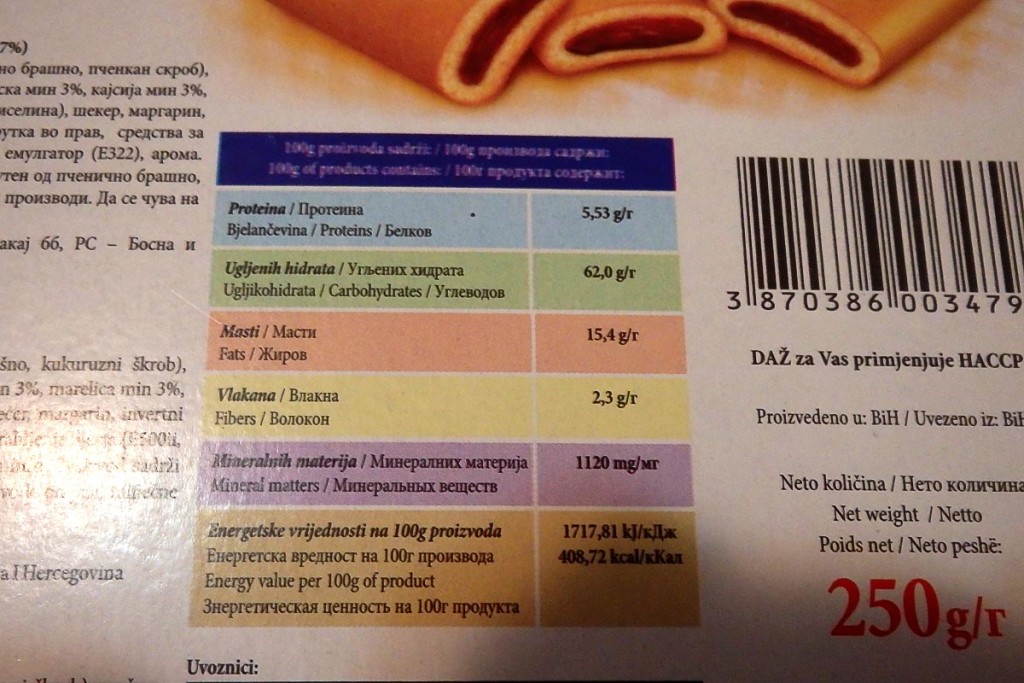
Nutrition info in several languages, including English. Carbs are easy to find, but I’m more curious about these “mineral matters”…
Going to Bosnia and Herzegovina?
Although tourism to this country is becoming more and more popular, it can still be surprising how many interesting places and sites there are to see. Bosnia is a fantastic place to spend time, and never fails to provide something new and interesting for the open-eyed traveler.
If you have been to Bosnia with diabetes (or even without!) let me know your experiences there. If you are thinking of or planning on going, and have questions or comments, let me know that too.
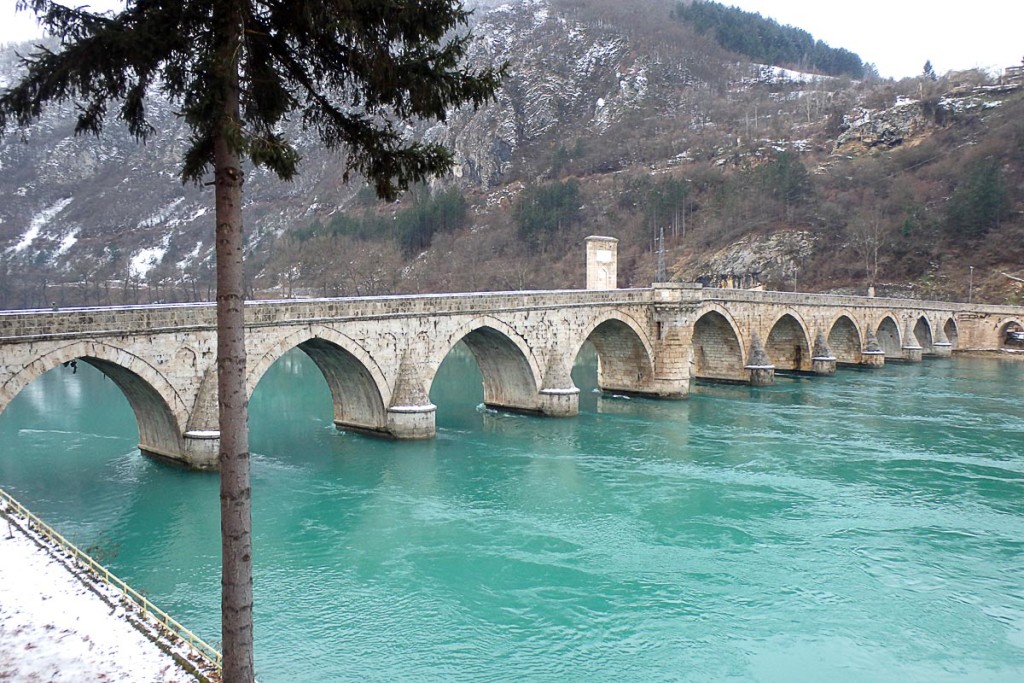
Do what you want, and be smart about traveling to Bosnia and Herzegovina with diabetes. Remember to do a little simple preparation, and to adopt the correct and helpful attitude you’ll need.
You can go anywhere with diabetes!
Read more about my travels in Bosnia
Come along on the adventure! Follow detailed travelogues about the wondrous sights, fascinating people, and varied diabetes experiences I encountered as a traveling T1D in Bosnia:
Day 83: Over The Border By Bus To Mostar In Bosnia And Herzegovina
Day 84: A Walk Around Recovering Mostar In Bosnia And Herzegovina
Day 85: Private Tour Of Počitelj And Blagaj In Bosnia And Herzegovina
Day 86: Head-spinning First Day In Sarajevo, Bosnia And Herzegovina
Day 87: The Icy National Museum In Sarajevo, Bosnia And Herzegovina
Day 88: Great Views And Wild Dogs: Final Day In Sarajevo
Day 89: Snowy Bus Ride To Višegrad In Bosnia's Srpska Republic
Day 90: Surprising Walk Around Višegrad In The Srpska Republic
Day 91: A Home-cooked Meal On Orthodox New Year In Višegrad
Day 92: Bus From Srpska To Serbia's Capital Belgrade
Thanks for reading. Suggested:
- Share:
- Read next: Tips for traveling to Serbia with diabetes
- News: Newsletter (posted for free on Patreon every week)
- Support: Patreon (watch extended, ad-free videos and get other perks)

Support independent travel content
You can support my work via Patreon. Get early links to new videos, shout-outs in my videos, and other perks for as little as $1/month.
Your support helps me make more videos and bring you travels from interesting and lesser-known places. Join us! See details, perks, and support tiers at patreon.com/t1dwanderer. Thanks!
